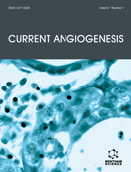Abstract
Tissue engineering uses various approaches to restore bone loss and heal critical-size defects resulting from trauma, infection, tumor resection or other musculoskeletal diseases. The success of bone tissue engineering strategies critically depends on the extent of blood vessel infiltration into the scaffolds. It has been demonstrated that blood vessel invasion from the host tissue into scaffolds is limited to a depth of several hundred micrometers. Limited vessel perfusion restricts the formation of bone in central regions of the scaffold, leads to loss of cell viability in this region and ultimately does not support healing of the defect. This review addresses the importance of vascularization in bone tissue engineering, discusses the key factors regulating the process of angiogenesis, and provides an overview of current approaches to direct blood vessel formation in biomaterials.
Keywords: Regenerative engineering, engineered biomaterials, angiogenesis, bone, hypoxia, microscale technology.
 28
28

